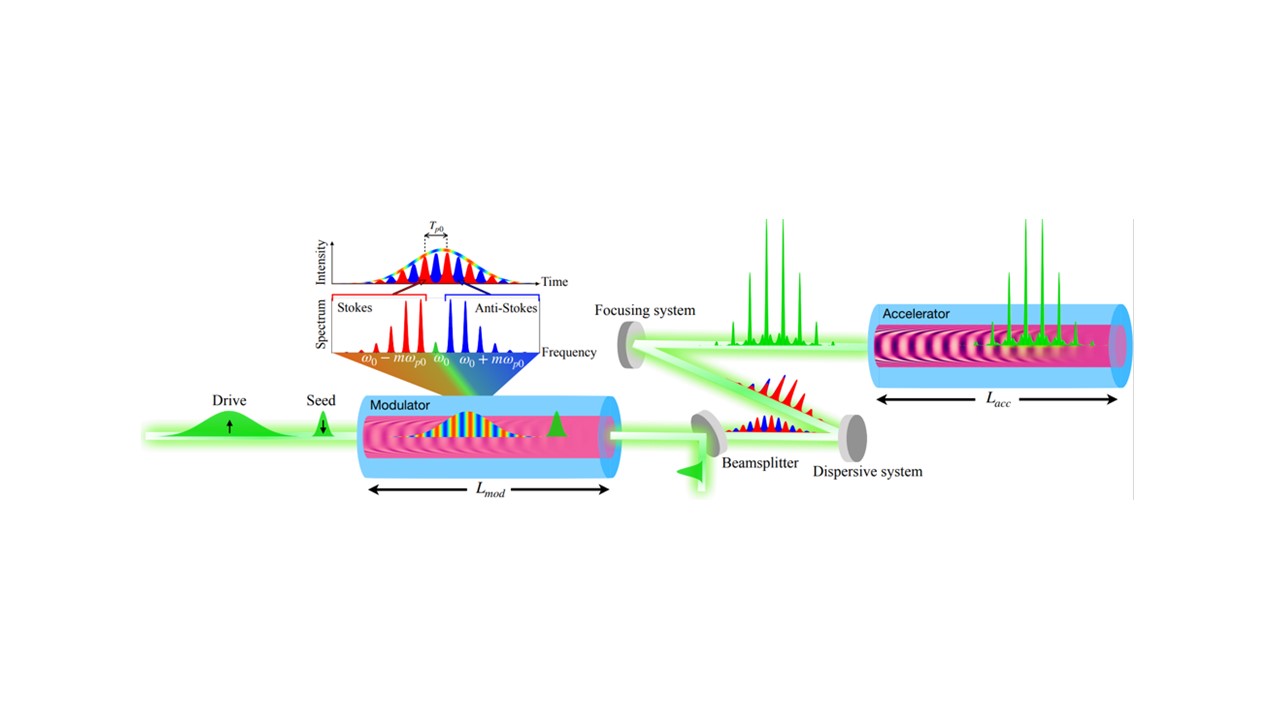Supervisors: Stefan Karsch (Ludwig Maximilian University of Munich) & Simon Hooker (University of Oxford)
The plasma‐modulated plasma accelerator (P‑MoPA) concept, developed at the University of Oxford, aims to use picosecond pulses from commercially available thin-disk lasers to drive GeV-scale plasma accelerators at kilohertz rates. Typically, exciting the required large-amplitude plasma wave requires high-energy laser pulses shorter than half the plasma period (about 20–30 fs). While Ti:Sa lasers or OPCPA systems can deliver such pulses, they do not scale efficiently at high repetition rates.
In contrast, diode-pumped thin-disk Yb lasers provide joule-scale pulses at kHz frequencies but are limited to >1 ps duration. In the P‑MoPA approach, these pulses are transformed into a train of few-10 fs pulses that resonantly excite a plasma wave with efficiency similar to that of a single short pulse. Proof-of-principle experiments are underway at Oxford using the OPAL Ti:Sa laser, with full implementation planned on CALA’s PFS-pro system. The concept follows a three-staged approach:
- Modulator Stage: phase modulation of ps-pulse by a weak plasma wave driven by low-energy fs- pulses-generated wakefield in plasma
- Compressor Stage: conversion of phase modulated pulse into a train of few-10 fs pulses
- Accelerator Stage: resonant excitation of large amplitude plasma wave in secondaysecondary plasma
The PhD project adapts the PFS-pro laser system into a dedicated P‑MoPA facility by synchronizing two Yb:YAG laser arms—one delivering 6 J at 3 Hz and the other 120 mJ at 1 kHz—into a common experimental chamber. The high-energy arm is split into three 2 J beams: two create plasma channels with axicon-focused Bessel beams, and one is used as the modulated drive beam. The kHz beam is post-compressed to 50 fs, serving as both a seed for modulation and a probe for plasma wave diagnostics. Initial laboratory setups and guiding experiments have been successfully completed. Over the next 2–3 years, the project will focus on demonstrating high-energy pulse modulation, developing an effective compression scheme, and achieving full system integration.
Expected Results
- High-energy periodic phase modulation of ps pulses
- Compression of modulated ps pulses into trains of few-10-fs pulses
- Resonant excitation of strong plasma wakefields by pulse trains
- Injection in electron pulses into resonantly driven plasma waves
Planned secondments
- 4 months at Oxford University for preparatory experiments on OPAL laser
- 1 month at RAL/ELI for collaborative experiment into multi-pulse wakefield excitation

